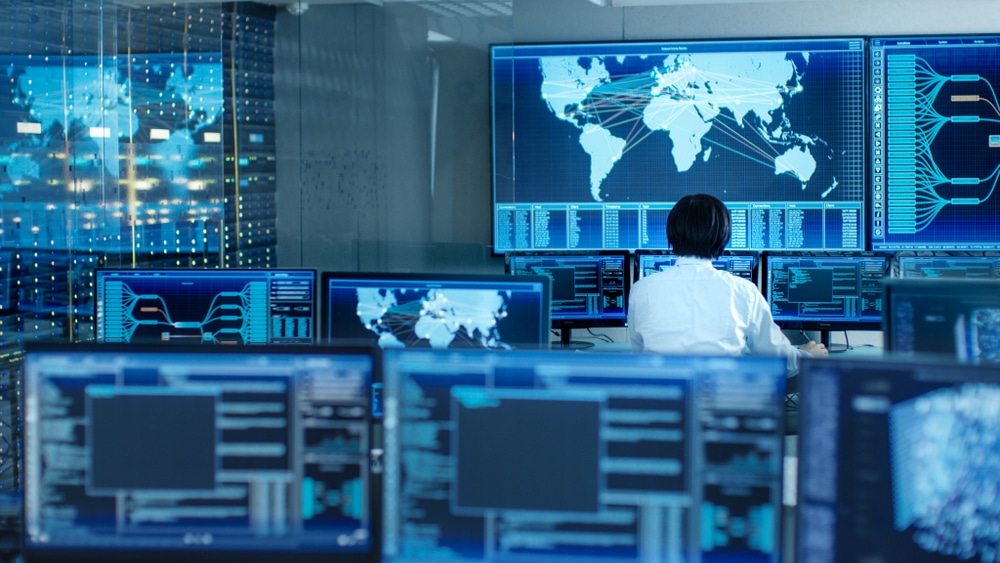Why is Critical Event Management Important?


James Thorpe
Share this content
Organisations are regularly impacted by episodes ranging from network outages, to cyber-attacks and ransomware, pandemics, natural disasters and geo-political tensions which demand critical event management.
These events can disrupt operational capability, supply chains and in extreme cases take down critical infrastructure with devastating effect.
Critical Event Management (CEM) platforms provide a consistent framework for planning, responding and recovering from all types of incidents, disasters, crises and disruptions.
Riz Omar, COO of Locate Global, explains the importance of CEM platforms and the key benefits of investing in technology-based systems.
What is Critical Event Management (CEM)?

Critical event management is the practice of establishing measures to ensure incidents are resolved quickly and effectively.
It’s closely linked to all emergency planning and influenced by existing response protocols across corporate entities.
The key is really understanding an entire organisation’s critical functions and how they would be impacted should an incident occur.
Once the potential damage is established, this enables the identification and implementation of procedures to minimise vulnerabilities and safeguard critical operations.
How Can Organisations Mitigate Risk & Impact?
Critical events, like severe weather, significant security events or supply chain disruptions are unavoidable within a business.
However, organisations can work towards reducing the impact of critical events through preparation.
For example, should a crisis occur, it is vital that employers have access to their workers’ whereabouts and safety status.
If companies fail to prepare, businesses can lose valuable time trying to locate their global workforce.
Traditional methods of calling and checking on staff members are time consuming and cannot provide all the relevant information needed – such as an employee location.
CEM technology offers a way for employers to locate workers quickly and ensure that they are safe, accelerating the time to identify, resolve and respond to an incident.
How Can Companies Plan Effectively?
Companies must first create a clear, comprehensive critical event management strategy to ensure that all employees are prepared for an emergency.
A large part of incident management is aligning resources.
A critical event may only impact a single department.
However, the response could potentially require company-wide action.
CEM improves communication and inter-departmental coordination, establishing key stakeholders with priority actions.
Technology can also help organisations manage the complex process of returning to the workplace and other public spaces post pandemic.
Why invest in an Incident Management System?
Emergency incidents can be measured with real-time information and met with a rapid, accurate and precise response when coupled with the latest technology.
Tech solutions allow organisations to manage critical events with greater visibility and utilise an automated procedure.
Instant mass communication ensures staff, stakeholders and emergency contacts stay up-to-date and informed.
In the event of an incident, alerts can be raised, instigating escalation processes, streamlining incident response and improving response times.
Key Benefits of Using Technology-Based Systems
The main benefits of a technology based system are preparedness, communication and safety.
Without suitable preparation, the cost of resolving critical events will be considerably more and businesses will take longer to recover, maybe resulting in lost productivity, damaged reputation, supply chain instability, lower revenue and lower staff retention.
Emergencies can occur at any given moment.
Monitoring your employees in real-time to see who is safe and who was in danger is vital.
Technology allows you to see who is affected by an incident and allows you to focus attention on those that are in danger.
Can CEM Platforms Improve Business Resilience & Continuity?
The data is stored securely in one place, recording key metrics and statistics that can provide valuable insight into your operations.
Teams can utilise reporting features to manage day-to-day incidents and allow better situational awareness into routine operations, thus improving resilience and your organisation’s ability to keep its employees safe.
Post-incident analysis can really aid the management of vulnerabilities which can highlight both successes and failures.
This can influence business continuity practices in the future.
How Easy to use are Technology-Based Platforms?
Understandably, all platforms are different.
Locate Global is cloud-based and designed to be accessed and managed from anywhere in the world with an internet connection.
Onboarding can be as simple as uploading user details into the platform, from which they receive a SMS to register and download the application.
The smartphone app operates in the background of any iOS or Android device, with minimal impact on battery performance.
Through the dashboard, it’s then easy to access your employees’ telemetry data, such as battery level, signal accuracy and connected wearables to ensure workplace safety.
Why Should Organisations Invest in this Tech?
In short, this technology can aid safer global business travel, enable better incident management and decision making, and enhance collaborative communication allowing employers to have the tools to be responsive and responsible employers.
It also provides organisational management with a holistic situational awareness and visibility.
For more information about Locate Global and the benefits of incident management visit their website to try a live demo.



